Abstract
Quantitative and qualitative differences in nucleic acids of Korean boxwood (Buxus microphylla var. Koreana) leaves were determined by methylated albumin kieselguhr chromatography at different levels of cold hardiness. During cold acclimation there was an increase in RNA, mainly ribosomal RNA, with little or no change in DNA. The increase in ribosomal RNA was closely paralleled by an increase in water soluble and membrane bound proteins. As cold hardiness increased, ribonuclease activity declined.
Exposure of hardy boxwood plants to warm temperatures resulted in a rapid loss in cold resistance and a rapid synthesis of nucleic acids as judged by 32P incorporation.
Following a killing frost to Korean boxwood leaves, there was a rapid decrease in all nucleic acid fractions which was attributed to nuclease activity. Within 5 hours there was no measurable soluble RNA and ribosomal RNA. Tenaciously bound RNA was somewhat more persistent.
Full text
PDF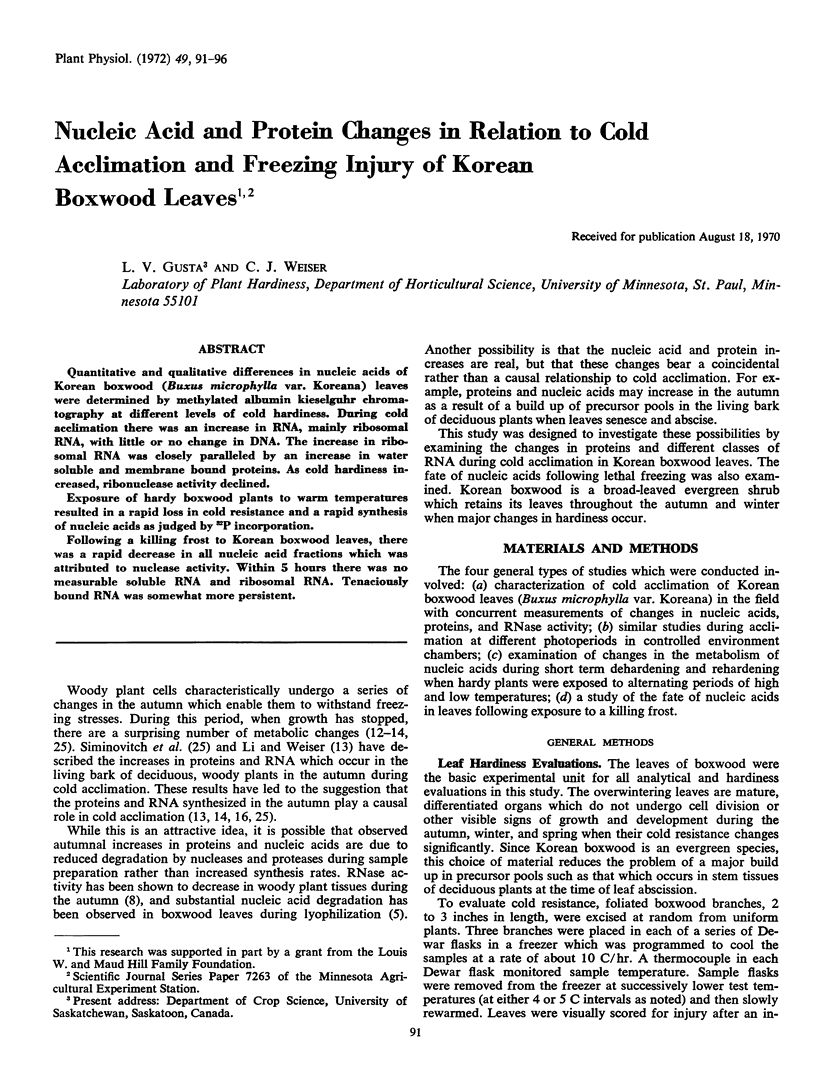
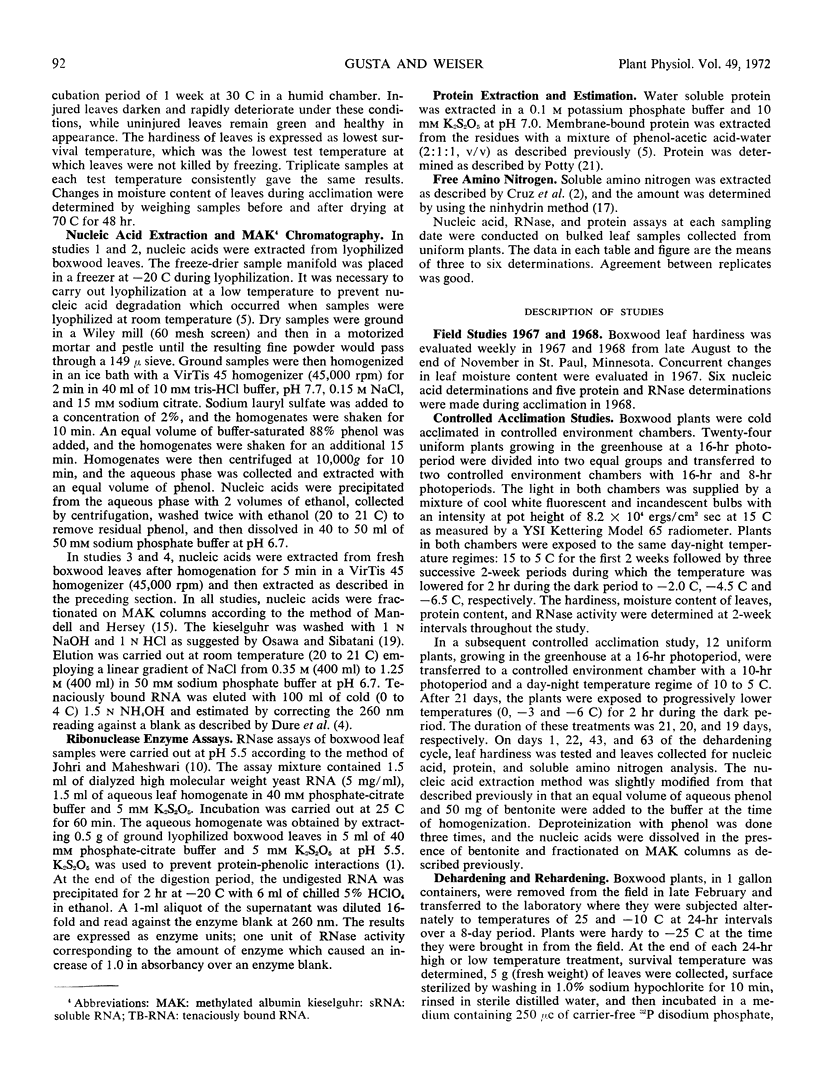
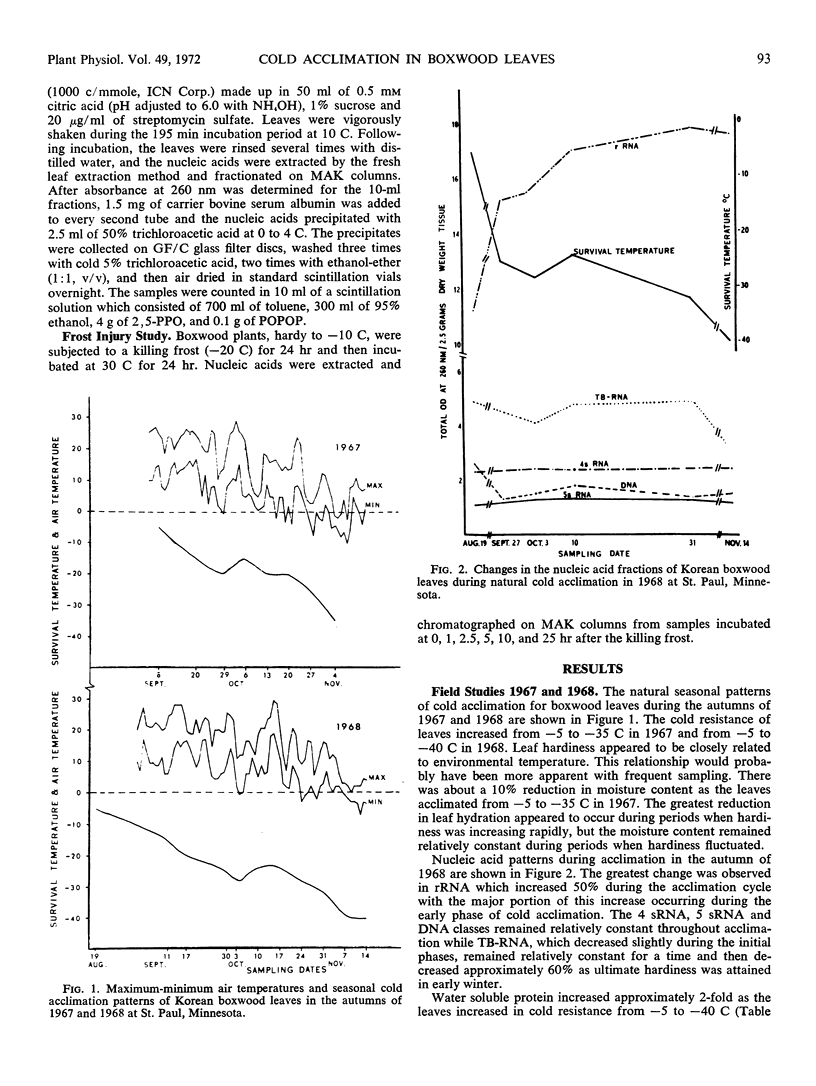
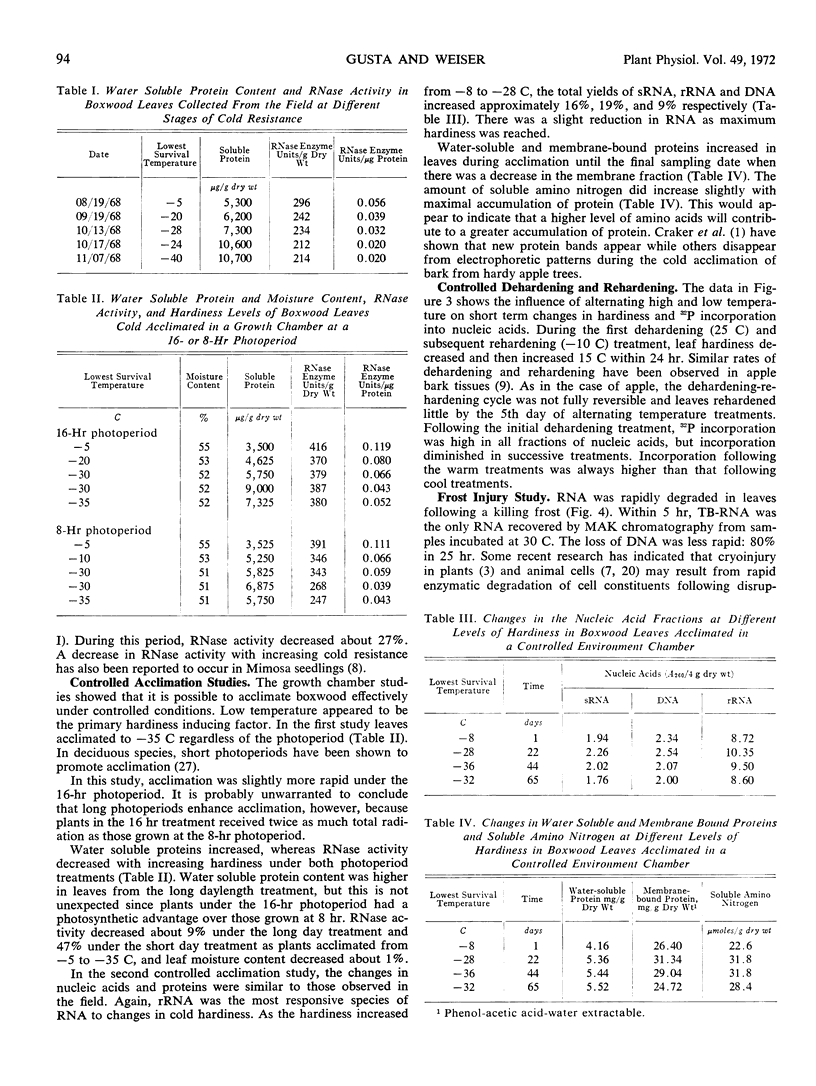
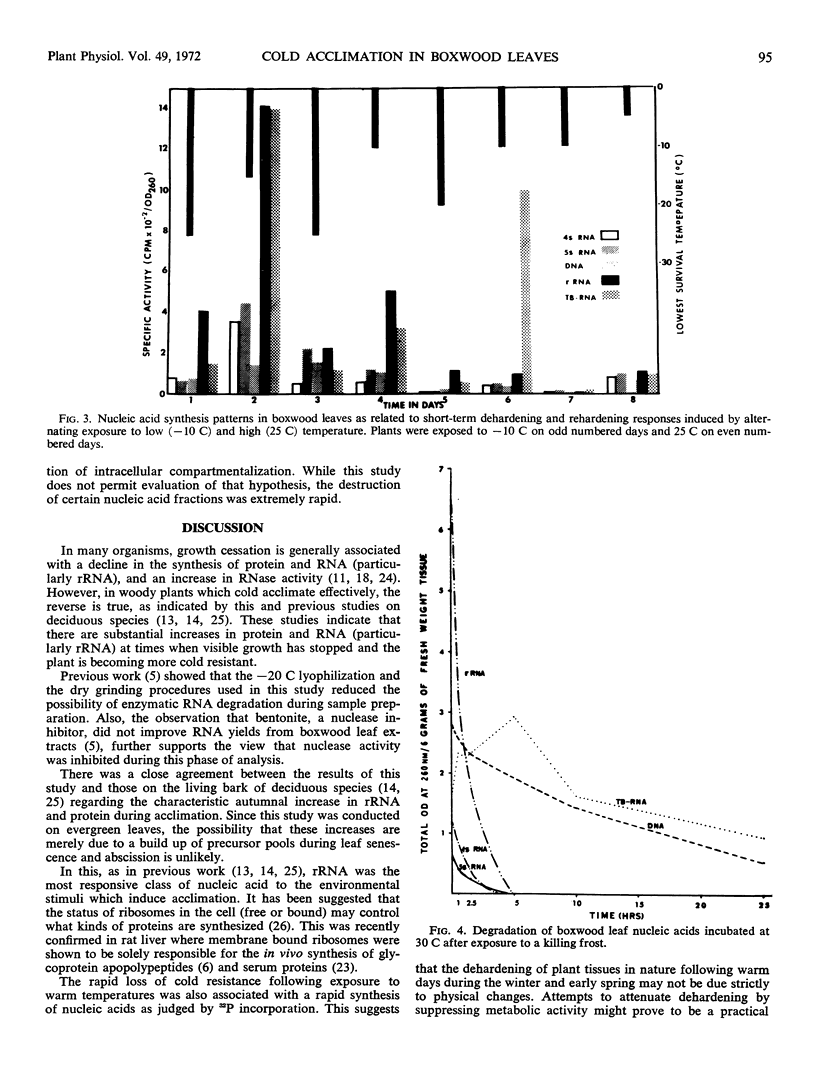
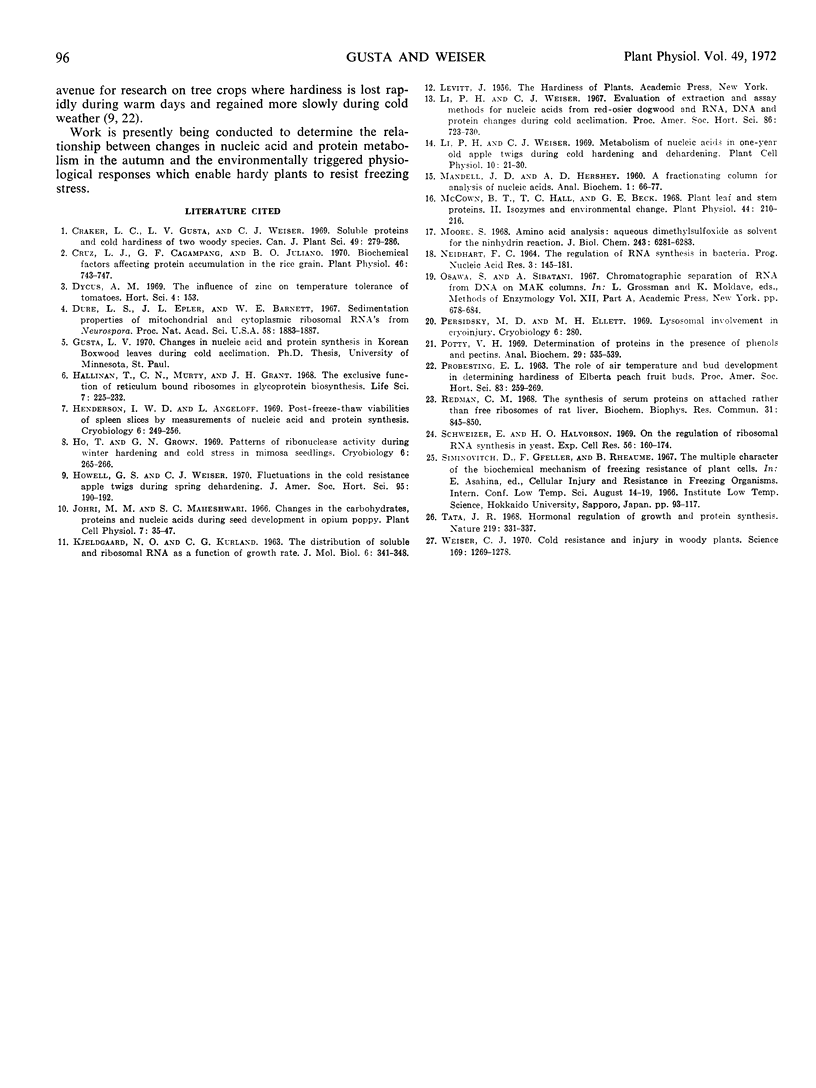
Selected References
These references are in PubMed. This may not be the complete list of references from this article.
- Cruz L. J., Cagampang G. B., Juliano B. O. Biochemical factors affecting protein accumulation in the rice grain. Plant Physiol. 1970 Nov;46(5):743–747. doi: 10.1104/pp.46.5.743. [DOI] [PMC free article] [PubMed] [Google Scholar]
- Dure L. S., Epler J. L., Barnett W. E. Sedimentation properties of mitochondrial and cytoplasmic ribosomal RNA's from Neurospora. Proc Natl Acad Sci U S A. 1967 Nov;58(5):1883–1887. doi: 10.1073/pnas.58.5.1883. [DOI] [PMC free article] [PubMed] [Google Scholar]
- Hallinan T., Murty C. N., Grant J. H. The exclusive function of reticulum bound ribosomes in glycoprotein biosynthesis. Life Sci. 1968 Mar 15;7(6):225–232. doi: 10.1016/0024-3205(68)90016-7. [DOI] [PubMed] [Google Scholar]
- Henderson I. W., Angeloff L. Post-freeze-thaw viabilities of spleen slices by measurement of nucleic acid and protein syntheses. Cryobiology. 1969 Nov-Dec;6(3):249–256. doi: 10.1016/s0011-2240(69)80356-1. [DOI] [PubMed] [Google Scholar]
- MANDELL J. D., HERSHEY A. D. A fractionating column for analysis of nucleic acids. Anal Biochem. 1960 Jun;1:66–77. doi: 10.1016/0003-2697(60)90020-8. [DOI] [PubMed] [Google Scholar]
- McCown B. H., Hall T. C., Beck G. E. Plant Leaf and Stem Proteins. II. Isozymes and Environmental Cabbage. Plant Physiol. 1969 Feb;44(2):210–216. doi: 10.1104/pp.44.2.210. [DOI] [PMC free article] [PubMed] [Google Scholar]
- Moore S. Amino acid analysis: aqueous dimethyl sulfoxide as solvent for the ninhydrin reaction. J Biol Chem. 1968 Dec 10;243(23):6281–6283. [PubMed] [Google Scholar]
- Potty V. H. Determination of proteins in the presence of phenols and pectins. Anal Biochem. 1969 Jun;29(3):535–539. doi: 10.1016/0003-2697(69)90339-x. [DOI] [PubMed] [Google Scholar]
- Redman C. M. The synthesis of serum proteins on attached rather than free ribosomes of rat liver. Biochem Biophys Res Commun. 1968 Jun 28;31(6):845–850. doi: 10.1016/0006-291x(68)90528-7. [DOI] [PubMed] [Google Scholar]
- Tata J. R. Hormonal regulation of growth and protein synthesis. Nature. 1968 Jul 27;219(5152):331–337. doi: 10.1038/219331a0. [DOI] [PubMed] [Google Scholar]
- Weiser C. J. Cold Resistance and Injury in Woody Plants: Knowledge of hardy plant adaptations to freezing stress may help us to reduce winter damage. Science. 1970 Sep 25;169(3952):1269–1278. doi: 10.1126/science.169.3952.1269. [DOI] [PubMed] [Google Scholar]


